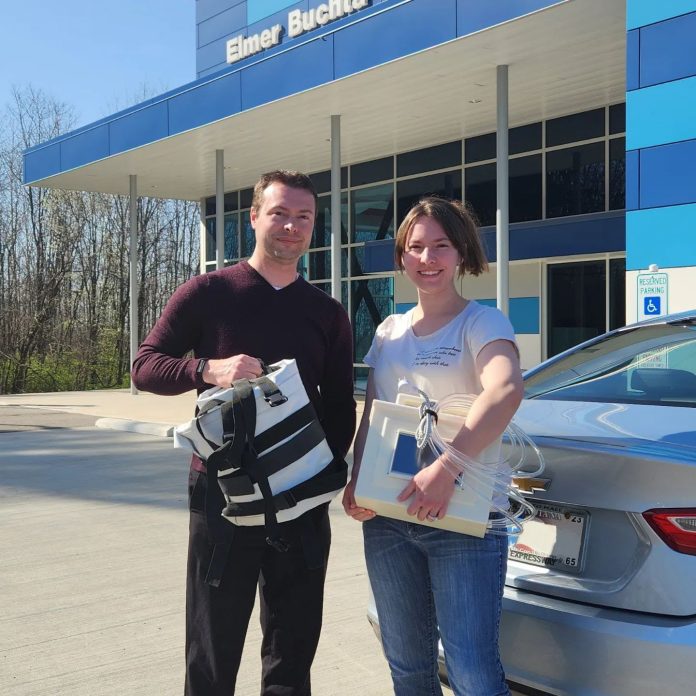In 2019, Steven Stump, Director of the Center for Applied Research at the University of Southern Indiana, was contacted by Morgan Miller, an Indiana University alumna working to develop a medical device to make patients more comfortable while staying in the hospital. The device helps patient care technicians turn patients on the bed more safely and comfortably.
Stump assisted Miller in applying for a grant through the Indiana Technical Assistance Program (INTAP), which helps fund startups and entrepreneurs in the state of Indiana. After Miller received the INTAP two years in a row, Stump connected her with a group of USI engineering students and a USI alum to help build the devices’ first prototypes.
USI’s Center for Applied Research (CAR), an outreach program, served as Miller’s point of contact at USI and coordinated the project with both internal and external partners. CAR helps to connect businesses with University resources, including access to 600 faculty members, four Colleges and 70 academic programs. The Center also helps individuals, organizations, and communities become more successful through product development, market research, organizational strategies, environmental studies and more.
CAR Student Project Technicians, Aven Kimmel ‘22, Josh Thurman ‘24 and Hagan Hollinger ‘24 designed the electronic system and user interface, as well as the housing for all the components. For custom parts not commercially available, the student technicians designed and 3D-printed components in USI’s Applied Engineering Center. Custom software and firmware were written to allow user control of each device, and the straps for the cushion were sewn on by members of USI’s Theater Support department.
Hollinger, the primary electrical engineer on the project, knew the opportunity could contribute to his professional growth. “This project was challenging, but very rewarding,†she says. “I was able to apply a lot of concepts I learned in my classes, but I also had to do a lot of independent research. Because of this, I was able to grow a lot as a student and as an engineer. I hope I find opportunities to do more microcomputer projects like this one in the future.â€
Marky Lara ‘24, USI engineering major and USI Men’s Soccer player, also assisted in the development of the initial prototypes. Through his internship with Anchor Industries last summer, he was able to assist in the manufacturing of the inflatable cushions that allow the device to turn the patient.
Miller credits working with CAR and student project technicians for turning her vision into a reality. She says after searching for months to find a responsive, reliable company to build the prototype, she was introduced to Stump.
“His [Stump’s] passion for his work and willingness to truly listen to my product idea was a breath of fresh air. Within a matter of weeks, he introduced me to his team of students who would be engineering my medical device,†she says. “They were professional and detail oriented. If they had a question, concern or improvement suggestion, it was addressed immediately.â€
The process was not without bumps in the road, though. Miller says as with any prototype process, delays and mistakes occur. But all were handled with grace and efficiency. “I plan to showcase my completed prototypes at Medtrade, a medical conference in Dallas, Texas. Not only will I be able to show functionality of my product, my potential investors and clients will be able to personally test out my device,†she says. “This is all made possible by the team at USI who brought my dream into reality and exceeded my expectations.â€
Miller has a larger vision in mind as she continues this journey. Her ultimate goal is to have a factory in Bloomington, Indiana, where she can manufacture and distribute these products. She wants to employ local Hoosiers who are passionate about changing healthcare and improving the care for vulnerable patients who are at an increased risk of bed sores and pressure ulcers.
Four prototypes were fabricated for Miller, so several units were available for demonstration and solicitation of pre-orders or investments. She received a patent for the new product in January 2023 and is still searching for a licensing deal to help manufacture her product on a larger scale while awaiting FDA-approval.





